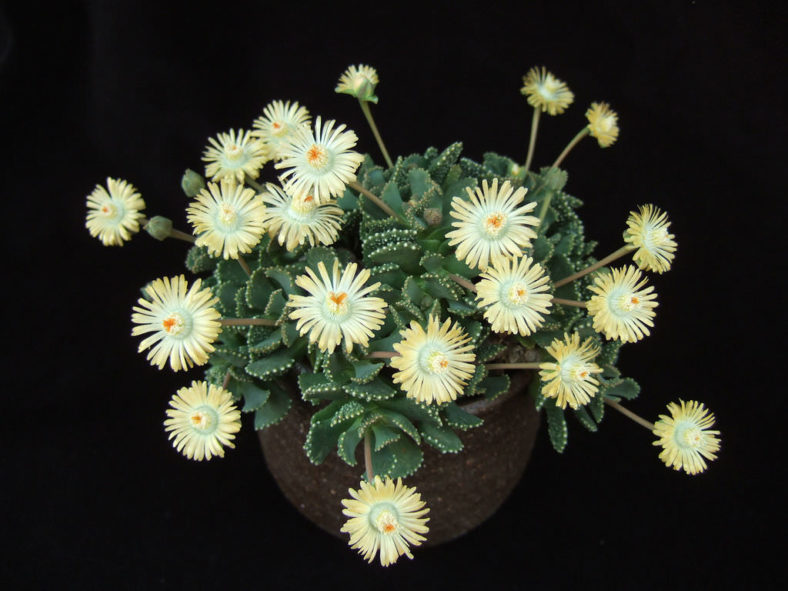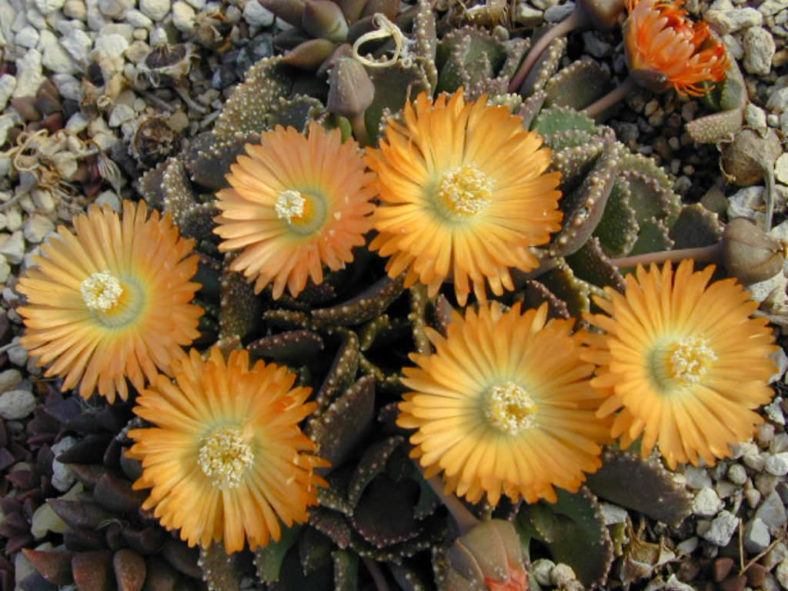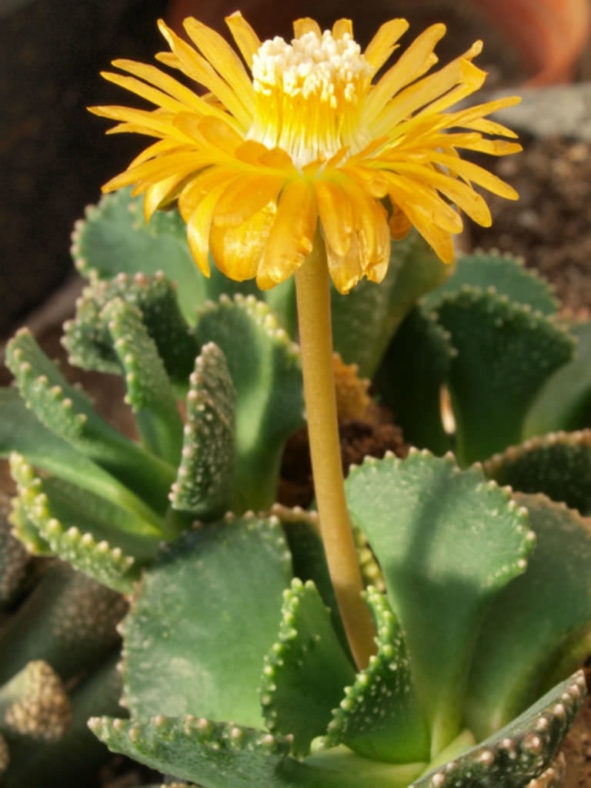Scientific Name
Aloinopsis malherbei (L.Bolus) L.Bolus
Common Name(s)
Giant Jewel Plant, Giant Jewel Succulent
Synonym(s)
Nananthus malherbei
Scientific Classification
Family: Aizoaceae
Subfamily: Ruschioideae
Tribe: Ruschieae
Genus: Aloinopsis
Etymology
The specific epithet "malherbei" (pronounced "mal-HERB-ee-eye") honors Marthinus Lourens Malherbe of Soekershof.
Origin
Aloinopsis malherbei is native to South Africa (Cape Province).
Description
Aloinopsis malherbei is a small succulent that forms rosettes of glaucous, fan-shaped green leaves. It can grow up to 2 inches (5 cm) tall. The leaves are erect, covered with tubercles more evident at the margins, and can measure up to 0.8 inches (2 cm) long.
The yellow flowers appear in mid-winter to early spring and can reach a diameter of up to 1 inch (2.5 cm).
Aloinopsis malherbei is similar in shape and texture to Aloinopsis spathulata and Titanopsis calcarea.

Hardiness
USDA hardiness zones 10a to 11b: from 25°F (-3.9°C) to 50°F (10°C).
How to Grow and Care
These plants are popular among collectors. They prefer a very porous potting mix to increase drainage. Aloinopsis are winter growers and need plenty of light. Most are somewhat cold-hardy and bloom in the winter.
Aloinopsis can be grown in the ground or a container. They will grow in the cooler parts of the year and flower in winter if it gets good light. Direct sunlight is essential for blooming well. Aloinopsis is probably dormant in summer, so it is usually recommended not to water much in summer. Do not be surprised if they do not grow then, but although Aloinopsis are better treated as winter growers, they will grow anyway in summer if given water. Aloinopsis should be fertilized only once during the growing season with a balanced fertilizer.
These plants are propagated by seed or division. Unfortunately, Aloinopsis are prone to red spider mites and root rot.
Learn more at How to Grow and Care for Aloinopsis.
Links
- Back to genus Aloinopsis
- Succupedia: Browse succulents by Scientific Name, Common Name, Genus, Family, USDA Hardiness Zone, Origin, or cacti by Genus
Photo Gallery
Click on a photo to see a larger version.


